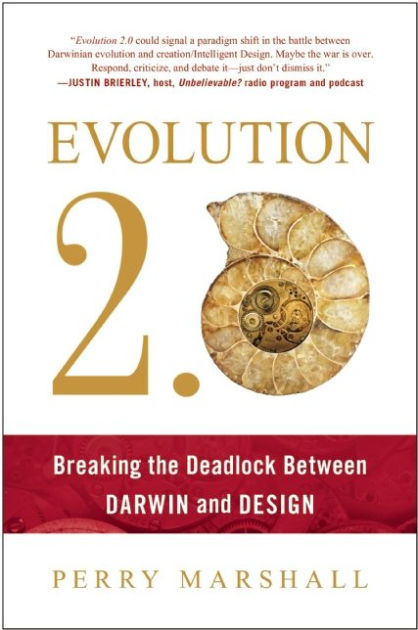|
home | what's new | other sites | contact | about |
||||
|
Word Gems exploring self-realization, sacred personhood, and full humanity
Perry Marshall's an electrical engineer / computer programmer
return to "Evolution" main-page
Editor's note: The following is from Perry Marshall's book, Evolution 2.0: Breaking the Deadlock between Darwin and Design
“If I email you a picture of a fender, you can’t attach that fender to your car. But I can certainly email you a program that [via robot] welds fenders on cars.” Similarly, Marshall points out, the nucleotides in a DNA strand – the molecules of adenine (A), cytosine (C), guanine (G), and thymine (T) – do not become “fenders” in the cell but merely send instructions on how to build components of the cell. “GGG makes glycine … [but note] that GGG is not literally glycine, because the GGG nucleotides never end up in the glycine. Instead, the nucleotides merge back into the original DNA strand after it is read. GGG are the symbolic instructions to make glycine. The cell’s machinery reads these instructions and obeys them. “The word obey is appropriate in this context because you can objectively determine whether the instructions were followed correctly or incorrectly. The cell monitors this and uses multiple checkpoints to halt the process if copying errors occur, including an ‘SOS’ response to corrupted data. It uses sophisticated machinery to correct errors.”
Marshall's tech background offers a sharp angle on the subject of DNA as code: “… the parallels between computer code and DNA aren’t merely analogies. DNA, I realized, is literally code … according to Claude Shannon’s universally accepted definition of code in communication systems [see chapter six]. For you to fully appreciate my ‘Eureka’ moment that DNA is literally code, I need to explain how information speeds along [a] blue cable known as the Ethernet, which connects your computer to the internet.” “A code is the rules of a communication system. The term code often also refers to the message itself. To have a communication system you need four things:
I must severely summarize Marshall’s explanation for brevity’s sake. He explains that encoding/decoding transmission of information, for example, in the common email, is like a series of Russian matryoshka dolls, one inside another. A picture “doll” sent in an email fits inside the text “doll,” which is inside the Word doc “doll,” and this is put into the email “doll,” and this goes inside a TCP/IP “doll,” a universal language of the internet. Marshall explains that data in DNA is stored in layers, like Russian dolls inside other dolls, creating larger and larger groups of data. Recall that the A, C, G, or T do not end up in the amino acids or the proteins but only serve as instructions, as data-messages, on how to make these molecules. “Just like your computer, DNA packs all of this information into a single string of 1’s and 0’s; only in the case of DNA, it is a string of A, C, G, and T. Just like digital data, DNA encapsulates that in layers within layers of instructions.” In the next segments, we’ll further discuss why all of this is important.
|
||||
|
|
